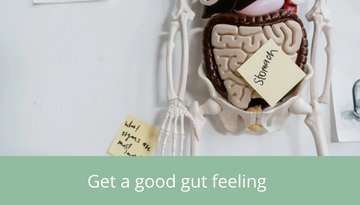The digestive tract – oesophagus (throat-to-stomach), the stomach itself, the small intestine and large intestine (appendix, colon and rectum) – works as a single entity to keep us happy in more ways than one.
It is a complex network of nerve cells, supporting cells, proteins and chemical messengers, much like those in the brain. The bowel itself contains about the same amount of nerves as the brain or spinal cord; a network that acts independently of both the brain and spinal cord, reacting to stimuli without instruction. It will continue to do this even when a person is incapacitated from severe brain or spinal injury. In fact, the only two digestive actions controlled by the brain are swallowing and defecation – everything else is controlled by the nerve network in the bowel, the enteric nervous system (ENS). It is the gut’s brain, located in sheaths of tissue lining the oesophagus, stomach, small intestine and colon.
In 1996, US professor of anatomy and cell biology Dr Michael Gershon, made headlines in The New York Times when he called the digestive tract the “second brain”.
According to Dr Gershon, the ENS played an important role in human happiness and misery, and it instigated a new field of medicine known as neurogastroenterology – the interrelationship between neurology and the gastrointestinal (GI) system.
Dr Gershon stated that "95 per cent of the body's serotonin is made in the bowel", but our “second brain” is also home to other major neurotransmitters dopamine, glutamate and norepinephrine; nitric oxide; 24 brain proteins called neuropeptides; the major cells of the immune system; enkephalins (of the endorphin family); and a rich supply of bensodiazepines (like psychoactive drugs) to keep a natural state of calm.
Although GI turmoil can most certainly sour one's mood, our daily emotional wellbeing may well rely on messages sent up from the brain below, to the brain upstairs.
Courtesy of Health 2000 - www.health2000.co.nz







